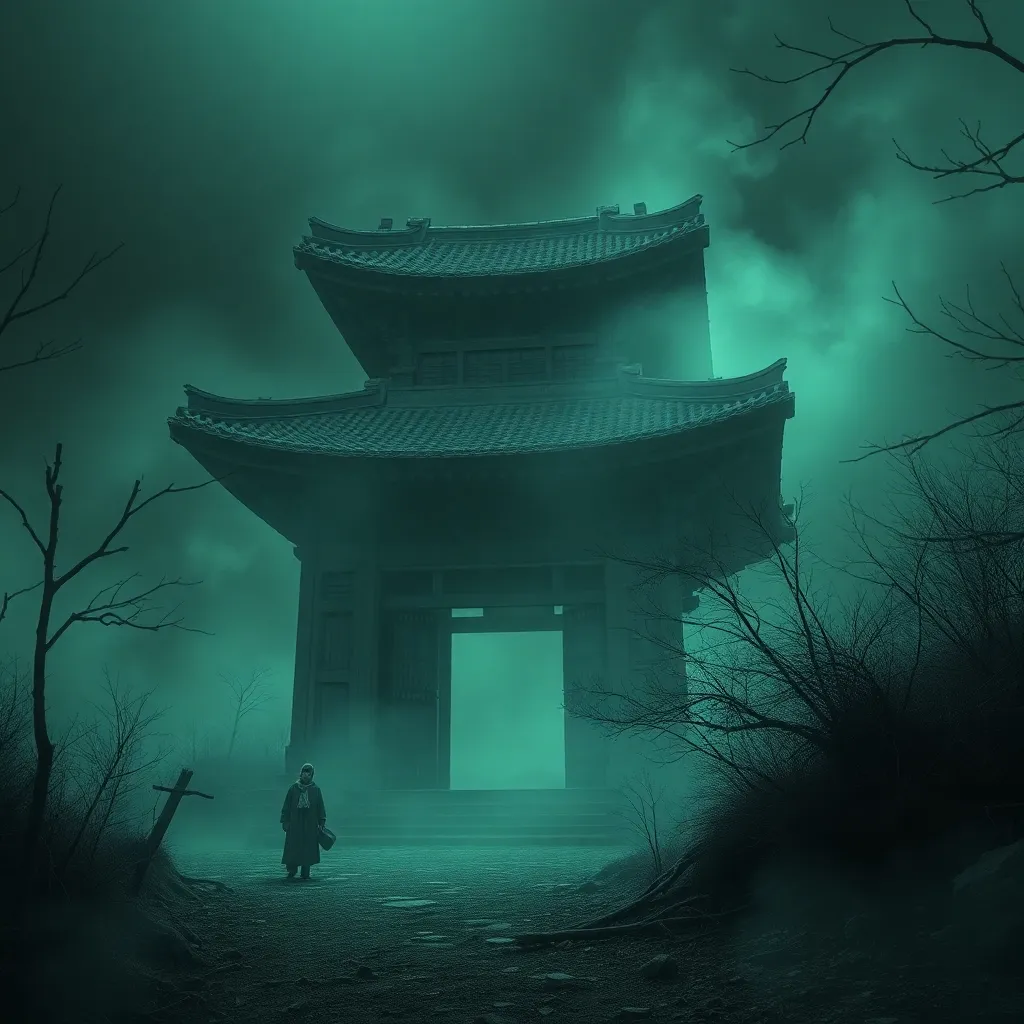The Haunting of the Jangsan: Uncovering the Secrets of Korean Ghosts
I. Introduction
Korean ghost legends are deeply rooted in the country’s history and culture, reflecting the fears, hopes, and beliefs of its people. These stories often involve spirits of the deceased who remain tied to the physical world due to unresolved issues, leaving a lasting impact on those who encounter them.
Among these legends, Jangsan holds a significant place in Korean folklore. This mountain, located just outside of Busan, has been the center of numerous ghost stories and hauntings that captivate both locals and tourists alike.
The purpose of this article is to explore the haunting of Jangsan and its cultural implications, shedding light on the rich tapestry of Korean ghost stories and the role they play in society.
II. The Legend of Jangsan
Jangsan has a historical background that intertwines with the tales of lost souls and tragic events. Locals recount stories that date back hundreds of years, involving battles, betrayals, and the suffering of innocents.
Key events leading to the haunting of Jangsan include:
- A tragic battle in the Joseon Dynasty that left many soldiers dead.
- The mysterious disappearances of villagers in the area, often attributed to vengeful spirits.
- Accounts of a young woman who, after losing her lover, roamed the mountain in despair, ultimately becoming part of its ghostly lore.
The ghostly figure most commonly associated with Jangsan is that of a woman in white, known as the “White Lady of Jangsan.” Witnesses describe her as a sorrowful figure, often appearing near the trails at night, her face obscured and her presence chilling.
III. Cultural Significance of Ghosts in Korea
In Korean culture, spirits and the afterlife hold substantial significance. Traditional beliefs suggest that the spirits of the deceased linger among the living, either to protect or to seek vengeance.
The role of ghosts in Korean folklore and storytelling is profound:
- Ghosts often serve as cautionary tales, warning against moral failings.
- They reflect societal fears, such as loss, betrayal, and unresolved conflicts.
- Ghost stories foster community bonding through shared narratives and experiences.
When compared to ghost stories from other cultures, Korean ghost stories often emphasize themes of honor, family, and the consequences of one’s actions, showcasing a unique perspective on the supernatural.
IV. Personal Accounts and Eyewitness Testimonies
The haunting of Jangsan has led to numerous personal accounts and eyewitness testimonies. Many locals and visitors have reported unexplained phenomena, such as sudden drops in temperature, disembodied voices, and shadowy figures.
Interviews with locals reveal a common thread of fear and fascination:
- Some locals avoid the mountain after dark, believing it to be cursed.
- Visitors often embark on night hikes, seeking thrill and adventure, despite warnings.
- Many report feeling an overwhelming sense of sadness when near certain spots on the mountain.
The psychological impact on witnesses can be significant, with many experiencing anxiety or a deep-seated fear after their encounters. These experiences often lead to a greater interest in the supernatural and a desire to understand the unknown.
V. The Jangsan Experience: Tours and Attractions
The allure of the Jangsan haunting has led to the development of ghost tours in the area. These tours offer visitors a chance to learn about local legends and experience the mountain’s eerie atmosphere.
Visitor experiences often include:
- Guided night hikes where stories of the White Lady are shared.
- Interactive sessions where participants can use ghost-hunting equipment.
- Opportunities to hear personal accounts from locals and previous visitors.
The impact of tourism on local culture and folklore is notable. While it helps preserve these stories, it also risks commercializing the sacred aspects of the legends.
VI. The Science Behind the Haunting
While ghost stories are often steeped in tradition and folklore, there are psychological explanations for many reported sightings. Factors such as:
- Sleep deprivation and group dynamics can lead to shared hallucinations.
- The power of suggestion, especially during ghost tours, can influence perceptions.
- Environmental factors, such as low frequencies or electromagnetic fields, can create feelings of unease.
Investigations by paranormal researchers have sought to understand these phenomena, often blending scientific inquiry with traditional beliefs.
VII. Modern Interpretations and Media Representations
The Jangsan haunting has found its way into contemporary culture through films, literature, and social media.
Depictions of Jangsan in media often emphasize its tragic history and ghostly encounters, leading to:
- A surge in interest in Korean horror films that explore similar themes.
- Social media platforms buzzing with user-generated content showcasing ghost hunts and personal experiences.
- A blending of traditional ghost stories with modern storytelling techniques.
As contemporary culture shapes perceptions of Korean ghosts, the stories of Jangsan continue to evolve while retaining their core themes of loss and unresolved sorrow.
VIII. Conclusion
The enduring nature of ghost stories reflects humanity’s fascination with the unknown and the afterlife. The haunting of Jangsan serves as a poignant reminder of the stories that shape our cultural heritage.
It is crucial to preserve these narratives, as they connect us to our past and provide insight into societal values and fears.
In conclusion, the allure of the Jangsan haunting and its mysteries will continue to captivate both locals and visitors, ensuring that the legends of Korean ghosts remain alive in the collective consciousness.




